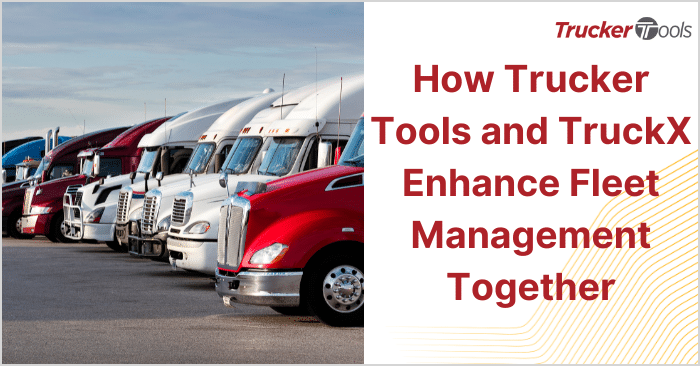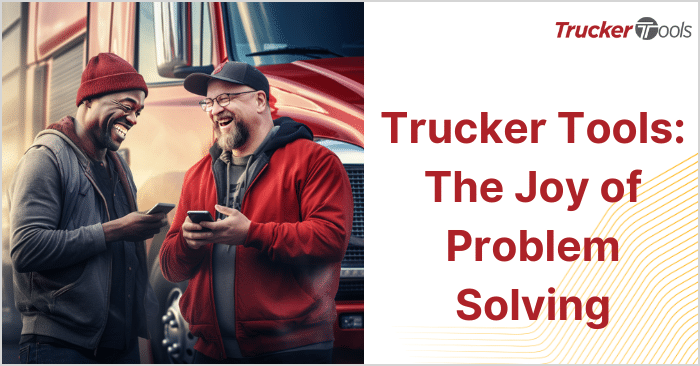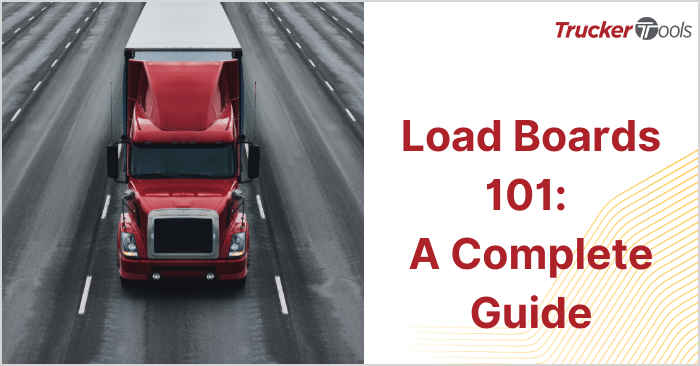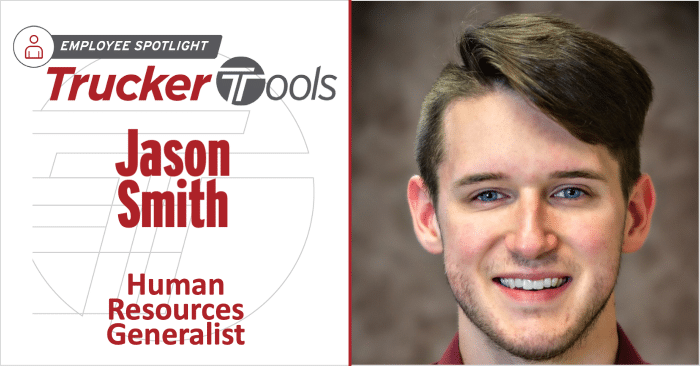Read time: 15 min
Double your tracking compliance, guaranteed! Otherwise, the month is on us.
Watch this recording of our webinar on our recent case study with Choptank Transport.
Choptank Transport is leveraging Trucker Tools’ real-time data to increase its carrier adoption of tracking technology, freight location accuracy, continuous freight tracking, and operational efficiency.
Learn how Choptank:
- Gained full load visibility from start-to-finish
- Increased carrier adoption of tracking technology
- Improved operational efficiency
- Provided shippers with continuous, start-to-finish freight tracking information
Watch the recording today! https://register.gotowebinar.com/recording/15422149830540039
Q & A Transcript
Tracy Neill: We did have several questions come in. So I’m going to read those off. First one and I think this one’s for you Prasad. Can you cover visibility from the shipper point of view?
Prasad Gollapalli: So from a shipper point of view, for example, Choptank is our customer and as a broker when we are tracking a load for Choptank, Choptank could say “Hey push this visibility on this load to this shipper, ABC”. So we then push that information back to the shippers if they have their own TMS. In most cases, if they have an aggregate or let’s say, Fourkites or Macropoint, we could push that information to them. We keep the carrier information and other critical information confidential and don’t share it with the shipper, but we do share the location of the load and where they are. So while we are providing visibility to your shipper, we’re also making sure that your information is kept confidential and protected.
Tracy Neill: Okay. Next question, this one is for Geoff. How does 97% compliance impact your relationship or standing with your customers? Are you able to gain more business from your customers because of this or are you able to use this as a tool to get more customers?
Geoff Turner: Yeah, that’s a good question. So again, what we’ve been trying to do is put more information in front of our customers and show that we can deliver this type of data to them. So yes, it’s helped us with traction with some existing customers. It’s also helped us get in the door with other customers where we can show them some of the analytics we’re able to provide.
“So again, what we’ve been trying to do is put more information in front of our customers and show that we can deliver this type of data to them. So yes, it’s helped us with traction with some existing customers. It’s also helped us get in the door with other customers where we can show them some of the analytics we’re able to provide.”
Another thing I didn’t mention is being able to show shippers some of our problem locations with a particular shipper. This has been incredibly useful to say “Hey, we love your freight, but by the way, this location has been sitting for six hours. What can we do to talk about that part of the business?”
This has given us the ability to have higher-level conversations with our customers on what their overall business looks like. It also helps to expose some of the problem areas that are really going to better them as an organization by fixing some of those problem locations. So it’s a total winning strategy from that standpoint.
The other piece that we’ve been working really hard on and are in the process of launching is building a customer portal where customers can go in and see all this tracking information live. One thing that we always hear from customers is: “Why can’t it be like Amazon where I go in and see where my truck is?”
That’s where we want to get; where they can just log in and see where everything is and hopefully we get them adapted to using that. That’s going to help them not call our people as much and then, to get to the point of the question, make us a little more sticky with the customer.
Tracy Neill: Okay, also for you Geoff, did you shut off carriers to your available freight if they refuse to download a Trucker Tools app? What percentage would you estimate eventually downloaded the app after being shut off?
Geoff Turner: So that’s a great one. We’ve never really measured it. I don’t think we’ve ever measured if we shut them off. We have shut off some of our larger carriers. When I say larger, I mean they have 20 to 25 trucks in that area, and because those organizations tend to have their systems a little better built out, they have somebody who was responsible after-hours. So those were some of the ones where the adaptation was a little tougher. With a lot of them, it was really just having a more high-level conversation with some of our senior carrier reps to talk to them and explain the process.
It’s not a matter of trying to babysit your guy, it’s more how the system is going to evolve into feeding this data back to our customers. So yeah, we did have to turn some carriers off, but for the most part, we’ve been seeing better and better adaptation. A lot of it was really just having a good conversation because a lot of them didn’t understand what the product was and what we were all trying to accomplish. But I can’t say that we did not turn some carriers off and that some are probably still off because of it.
Tracy Neill: Okay, does Trucker Tools provide robust reporting or a dashboard on driver acceptance, driver rejection of tracking app, a lost connection of tracking app, or accuracy of tracking, etc.?
Prasad Gollapalli: Yes to all of the above and I know your team uses all of that to see who has accepted, Geoff. We pretty much make everything very transparent. So the moment you put a load with a carrier and a driver, we tell you if the driver has already downloaded the app before. If not then did he click the link, did he download the app, did he open that up and see the little details. So all along the way you get complete transparency. That’s what helps brokers in my mind because they’re not sitting in the dark and saying “Hey I sent this guy a text message to download the app, I don’t know where he is.” It’s just not the case with us.
“The moment you put a load with a carrier and a driver, we tell you if the driver has already downloaded the app before. If not then did he click the link, did he download the app, did he open that up and see the little details. So all along the way you get complete transparency. That’s what helps brokers in my mind because they’re not sitting in the dark and saying “Hey I sent this guy a text message to download the app, I don’t know where he is.” It’s just not the case with us.”
We also provide, in cases where the driver is a non-English-speaking driver, a Spanish message, rather than an English message. So this kind of helps the driver understand what to do with it.
Tracy Neill: Okay, next question, also for you Prasad. What do you say to those who claim that carriers don’t want to download a mobile app for tracking?
Prasad Gollapalli: This is a question we get asked all the time. It is true that drivers don’t want to download only a tracking app. The part of that is if you are asking the driver to download an app that only does tracking they look at this app and they’ll say “Well I mean, what does this do after I tracked this load for you? Is it going to still track me? Why do I need this app on my phone?” So the chances of the driver deleting that app are very high in addition to the resistance to download it. But when you have the tracking as part of a toolbox that helps the drivers with finding cheapest fuel, parking, truck stop guide, and everything that they need on the road, the resistance lowers. Also, in most cases, when someone tries to track a load through Trucker Tools the driver is already using the app. Whether it’s to find the route to your pickup location, find truck stops along the way, or search for weigh scales or truck wash stations.
There is already that stickiness there. There is no resistance. And so for those who think the drivers are opposed to downloading the app, we can provide them with an app that does more than one thing like a toolbox. The other area where we hear comments from truckers is that when you provide them with a third-party app as opposed to an app that is tied to one broker, there is more trust; they’re more open to a third party app than a brokers app.
Tracy Neill: Okay, this next question is for Geoff. How is operational efficiency defined? What are you doing with your additional 20% efficiency? Are you using that to get more loads from the customers? How did it help increase your business?
Geoff Turner: Yeah, that’s a great question. I mean, I think you know the bigger side of the question is how can we move more loads per day per person and when we look at our organization, that number is critical to the bottom line profitability. So the more we can see that number tick up, the more we’re seeing the benefits of that.
Over the last four years, we added total 24-hour staffing. That is the kind of stuff that as you grow an organization it gets tougher to want to fill those positions just because it is sort of seen as a sunk cost that hits right to the bottom line. So, as we’ve grown load count, we haven’t had to expand on those after-hours, because a lot of their time was spent with pure track and trace. Delivering the customer service side of things was really important and it really freed up their time.
So one, we didn’t have to add as many people and two, it gave the carrier salespeople the ability to move more loads per day. We’re not going to have to add as many carrier salespeople, because we’re taking away some of the more menial tasks. And even if you have an organization where you have people that are doing pure track and trace, even during the day, it’s still tough to keep those carrier salespeople out of that since they sort of own the carrier relationship.
Tracy Neill: Is there an ability for carriers to provide feedback about a broker? This one’s for you Prasad.
Prasad Gollapalli: Yes. If you are looking at a particular broker for a particular load you could if the feedback is coming to us. We have a message board through the app as well as a contact form, so they can always reach out to us. But if the feedback you’re talking about is with the broker, then they have two-way communication in the app where they can directly talk. So we look at these two as separate areas of communication.
The first one is when the carrier wants to communicate with us at Trucker Tools about a broker, a load, or perhaps our app, right? I mean that’s how we actually learn what carriers want. Everything that you see on our app has been promoted and suggested by truckers and owner-operators. They basically said this is what we’d like to see and that’s what we did. They made our life easier, right? So we provided this clear channel for them to reach out.
Tracy Neill: Okay. This one’s also for you Prasad. How many brokers currently use the app? And how do they get set up for tracking? Is that a different login than Smart Capacity?
Prasad Gollapalli: Let me answer the second part of your question first. For you to set up tracking you could, if you’re a small broker, either go online on our website and sign up or you could reach out to our sales team at [email protected]. We’re sharing a very good offer to our audience today. This is coming from our sales and marketing team. We’re so confident with our tracking that if you receive 30% or less compliance with your tracking vendor today then come to us and we’ll double your current compliance. It’s guaranteed. So if you don’t reach that goal, it’s on us and there is no risk for you.
Of course, we like to see you follow the best practices and see your commitment to pushing your loads through us. For more details on that, you can reach out to [email protected].
Going back to the first part of the question. A majority of the top brokers are using our platform and we’re adding more brokers every single day. So this is rapidly growing and we have been first in the digital matching space. So we’re really taking advantage of that.
Tracy Neill: So just adding on to that question, if they’re already using Smart Capacity then how do they sign up for tracking?
Prasad Gollapalli: Our Smart Capacity comes with tracking. So it’s just two parts in one. If you want to get started with tracking, our customer success team will set up the tracking part first before the matching part. But if you would like to have both then we can activate both. What we are seeing this past year has been that more and more brokers want the tracking piece first, given the market conditions on the matching side.
I would say the tracking has been really the biggest need for a majority of the brokers, because, as I mentioned earlier, there has been very low compliance out there. Today most of them are seeing about 30% success.
Tracy Neill: This next question is for either one of you. What do you suggest as the best approach when explaining to carriers that you want them to be set up on the Trucker Tools app?
Geoff Turner: Yeah, that’s a great question. So we’ve gotten to the point where we really don’t ask them to do it. We sort of say it’s part of the load. And again, the thing that I love about this product is that the more and more each one of us are having these conversations with the carriers, the more and more they get educated on what it can do for them.
Since we have customers that require 100% compliance, we just sort of reiterate the message from the customers. Like if you want to access to this freight you’ve got to do this. That to me is sort of one of the things we push, but we also push the value of what the product can do.
From all the other stuff, such as the locations of truck stops, parking, weigh stations, or service bays are. So I think it’s sort of training your people up on the message that the carrier is sending to you because each message is different on why they don’t want to do it and I think much like most of our sales training goes we have trained them for objections.
And you know, that’s sort of one of the things that we build in is like, okay, I understand the story that carries tell you and sort of feed off of that and try to paint to them what the benefits are. So that’s what I can add. I don’t know if Prasad can name anything on that.
Prasad Gollapalli: Thanks, Geoff, and I agree with you on that. When we bring in customers, we teach them the best practices with our customer success team and our customer support team works with them regularly to reiterate these practices. The main thing that comes out of those training sessions is that when you talk to the driver, your staff has to have the mindset that tracking is not an optional thing, because it’s a service that you as a broker provide to your shippers. This is one method we are using and why we are depending on this. It helps you as well and kind of separates yourself from the third party software. The carrier sees that third party as a buffer between you and them. You know, there will be a day in the future very soon where a hundred percent of the freight has to be tracked. Maybe you know a few loads here and there won’t be tracked, but pretty much everybody needs the tracking. The drivers are going to look at this tracking as a necessary thing for them to win the freight from you.
The last thing I would like to add is that there are some best practices. One is to have the driver download the app before picking up your load. Those are certain things that our team could walk you through to really get that higher compliance.
Tracy Neill: So this is going to be the last question. This is for Prasad. Wouldn’t it be easier to track using ELD? Does the app tie into the trucks ELD or smartphone?
Prasad Gollapalli: So let me restate the question. So the question is, is it easier to track through ELD? Is the app tied into to the ELD? For the first part of that question, it is effective if you’re working with a large carrier and they’re already set up on an ELD and they’re willing to share that information with you. That’s great, I think there’s a good solution in that, but most of the carriers are owner-operators. They’re fragmented and they’re probably not on one ELD provider to start with. There is also confusion among the carriers, and this is a gray area that I’d recently saw in this article on overdrive magazine, where carriers are a little bit pissed off because these ELD manufacturers or providers think that they can sell the tracking information. The carrier holds the data and everybody is trying to sell that data, and in many cases, whether it’s for detention and other things that data has been data-mined without the carrier’s knowledge, at least according to this article. It doesn’t require many cases like this to really piss off the carrier, because what the carrier doesn’t know is what the problem is.
We have started assuming things. There has been a lot of resistance from these small carriers. When we talk to brokers, we asked them, you know, what percentage of your load carriers are already set up with ELD. So we’re basically looking at the other set that request help. Typically the percent of the carriers that are set up with ELD is very low today. Still, eventually, there has to be more transparency with the carrier and the vendor and the broker on the yearly side to gain traction. Until then I think you know what we have is the app-based tracking, given the fact that Data Solutions have gone soft.
Tracy Neill: Okay, just one more question. What about shippers that require a specific tracking software like MacroPoint or Project 44, does Trucker Tools integrate with those?
Prasad Gollapalli: Yes, so say for example when you are a broker you come to us and say we have a shipper who requires Fourkites or MacroPoint. So we push the tracker information to this shipper on your behalf so you as broker don’t have to use another vendor for tracking. That also reduces confusion for your drivers.
So you’re not telling the driver as Geoff mentioned earlier to download Trucker Tools today and tomorrow some other app. It just makes the driver really frustrated. Also, there is a consistency for your shippers when you’re using one vendor across the board for a majority of your loads.
So yes, we are integrated with those aggregators and we push that. When we do that, we also protect your confidential information, so, you know, you’re happy.
Tracy Neill: Okay, and that is about all the time that we have and thank you, everyone, for joining us today.





